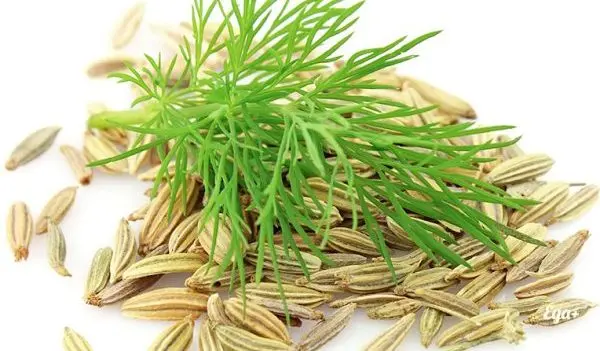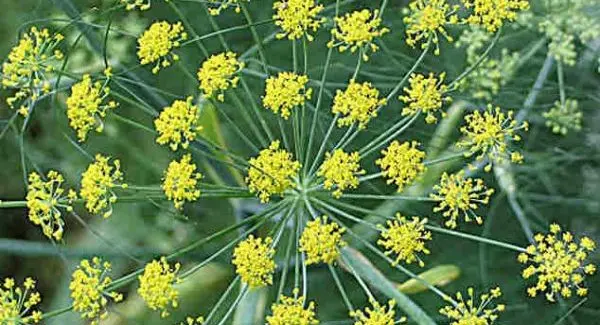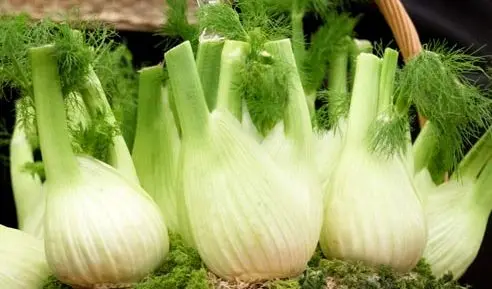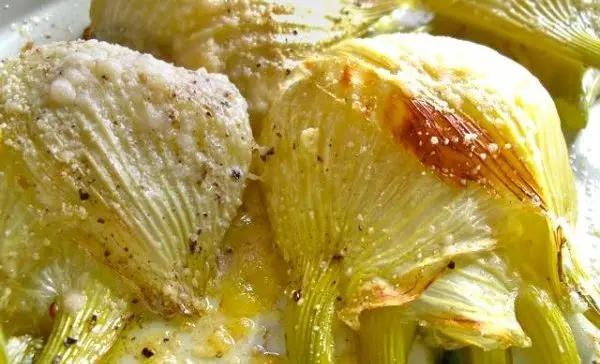Contents
Fennel is a herbaceous perennial culture of the Umbelliferae family, outwardly similar to dill known to us, but distinguished by a mild anise aroma and a spicy, sweetish taste. The plant has excellent healing properties – its seeds are used to treat many diseases, essential oil is produced from them, and all parts of fennel are widely used in cooking: leaves, seeds, petioles, and even roots. Therefore, the question is: how to grow fennel, and what kind of care does this crop need? – became of interest to many summer residents and supporters of traditional medicine.
Types of fennel
There are only two species in the Fennel genus: the common one, also called “pharmaceutical dill”, which has long been grown for spicy herbs and fruits; vegetable, or Italian, the cultivation of which has been practiced relatively recently, and it is mainly used in cooking, since it differs from its relative in the presence of juicy leaf petioles.

Common fennel is very popular with gardeners, and it can be found in almost every country house. Plants of this species are distinguished by the large size of the bush (1-2 m), powerful erect shoots, at the end of which there are complex umbrella inflorescences. Ordinary fennel is valuable fragrant herbs and seeds with medicinal properties.
Vegetable fennel has highly branched stems with a fleshy thickening at the base of the petioles. It is these juicy “heads” with a spicy refreshing taste that have a high nutritional value and are widely used in cooking. Heads of an adult plant, if properly cared for, reach 8-10 cm in diameter and look somewhat similar to kohlrabi cabbage, for which the species was called “vegetable”.

Based on this species, many hybrid varieties have been bred in Europe, in particular by Italian breeders. Our gardeners also do not lag behind European ones – the first vegetable variety of fennel of domestic selection called “Udalets” was bred back in 1996. Its peculiarity is that with a low growth of stems (up to 50 cm), the plant is able to grow large heads of cabbage weighing from 100 to 300 g. Rondo, Corvette, Luzhnikovsky Semko, early ripe Leader, Autumn Handsome. There are also fennel essential oil decorative hybrids (Krymsky, Chernivtsi), imported varieties (Italian, Sicilian), and elegant decorative varieties with purple leaves “Giant Bronze” and “Purpureum”, which are intended for planting in flower beds.
Video “Growing Rules”
Demonstrative video with the rules of growing fennel.
Planting in the ground with seeds
Typically, the cultivation of crops is carried out on a garden bed in the open field. The peculiarity of fennel is that the plant does not need a long light day, since it belongs to fast-growing herbs, and quickly releases flower stalks from excess sunlight. Therefore, planting seeds for the first harvest is carried out in April – May, and for the second harvest from mid-August to mid-September.
In severe weather conditions, growing fennel from seedlings is practiced. To do this, the seeds are sown in small containers of 2-3 pieces, and after germination, the extra and weak shoots are removed, leaving one of the strongest, which is then planted in the ground. This method is more often used for vegetable varieties of fennel. Cultures of this species are more susceptible to temperature changes, therefore, in the first month after planting in the ground, they need to provide shelter.

Fennel is not picky about the soil. In the wild, it can be found in the steppe, along roads, on stones, and even in landfills. Of course, it is ideal if its cultivation in the country is carried out in fertile black soil, but the culture grows quite well in loamy or sandy loamy soil. Only in this case, you need to try to make the soil more loose, nutritious and moisture-permeable, for which compost, humus, ash, sawdust are introduced.
When choosing a plot for growing a crop, you need to take into account that the comfortable temperature for normal plant growth is 16-20 ° C, so the landing site should be slightly shaded. For sowing seeds, it is necessary to prepare rows at a distance of at least 40 cm, since some varieties have fairly branched shoots. Planting seeds is carried out in moist soil to a depth of 1-2 cm. Due to the high content of esters, fennel seeds do not germinate quickly, but under normal climatic conditions, the first shoots appear 2-3 weeks after sowing in open ground.

Care and growing
It cannot be said about fennel that this plant is unpretentious. Its cultivation in the ground is inefficient without constant attention and control. The main requirement of the culture is good hydration, without which ordinary fennel simply will not grow, and juicy petioles will not be tied on vegetable varieties. Therefore, caring for a crop, first of all, consists in regular and sufficient watering. You need to water the bed 3-4 times a week, and in hot periods daily.
Further care provides complete control over the cleanliness of the beds. Timely weeding with the removal of weeds, as well as loosening the soil after each weeding, is a mandatory event, without which it is unlikely to get a bountiful fennel crop. It is easier to keep the soil clean by mulching with any available organic materials: sawdust, wood chips.

If the cultivation of fennel in the ground is carried out only for the purpose of collecting greenery, then flower stalks must be regularly removed. In addition, vegetable varieties need hilling bushes during the formation of thickenings on the stems. The hilling procedure must be carried out several times per season until the heads of cabbage gain the desired weight and juiciness.
Throughout the season, it is necessary to introduce organic top dressing into the soil: liquid chicken manure, a solution of wood ash. If the culture grows in insufficiently fertile soil (sandy, sandy loam), top dressing should be applied more often: in the spring before planting – compost, in the fall – manure or humus.
Harvesting
The collection of greenery of any kind of fennel begins as soon as the plants reach a height of 10-15 cm, and the base of the stems at the root will be approximately 1 cm. pickles for canning. Vegetable fennel begins to be harvested when the heads have reached a size of 8-10 cm, if the cultivation of the crop was carried out in order to obtain heads of cabbage. Juicy fennel stalks, if there is no need to use them immediately, are well stored in a dark, cold place, such as a cellar or basement. For long-term preservation, the plant is added dropwise to wet sand, while cutting off the stems a little higher than the heads of cabbage, and leaving the roots intact. Vegetable fennel greens can be harvested throughout the season.

Fennel fruits are of particular value for medicine, because they contain a huge range of useful substances, especially esters, which endow the seeds with healing properties. Fruit picking begins when the seeds turn brown-brown in color – if the plants were planted in the ground in early spring and the bushes bloomed in July, then it is most likely that the seeds will reach their maturity in late August – early September. To harvest seeds, you need to leave a few bushes with the largest umbrellas until autumn.
Experienced chefs and gourmets harvest fennel roots. In autumn, when the bushes are removed from the garden, the measles are cut off from the stems, washed well, dried a little, and then cut for subsequent drying or freezing. If desired, the roots can be stored like ordinary root crops – after digging them out, you need to shake off all the ground and place them in a cool place where other vegetables are stored.
Video “Advice to summer residents”
Informative video with useful tips for summer residents.









